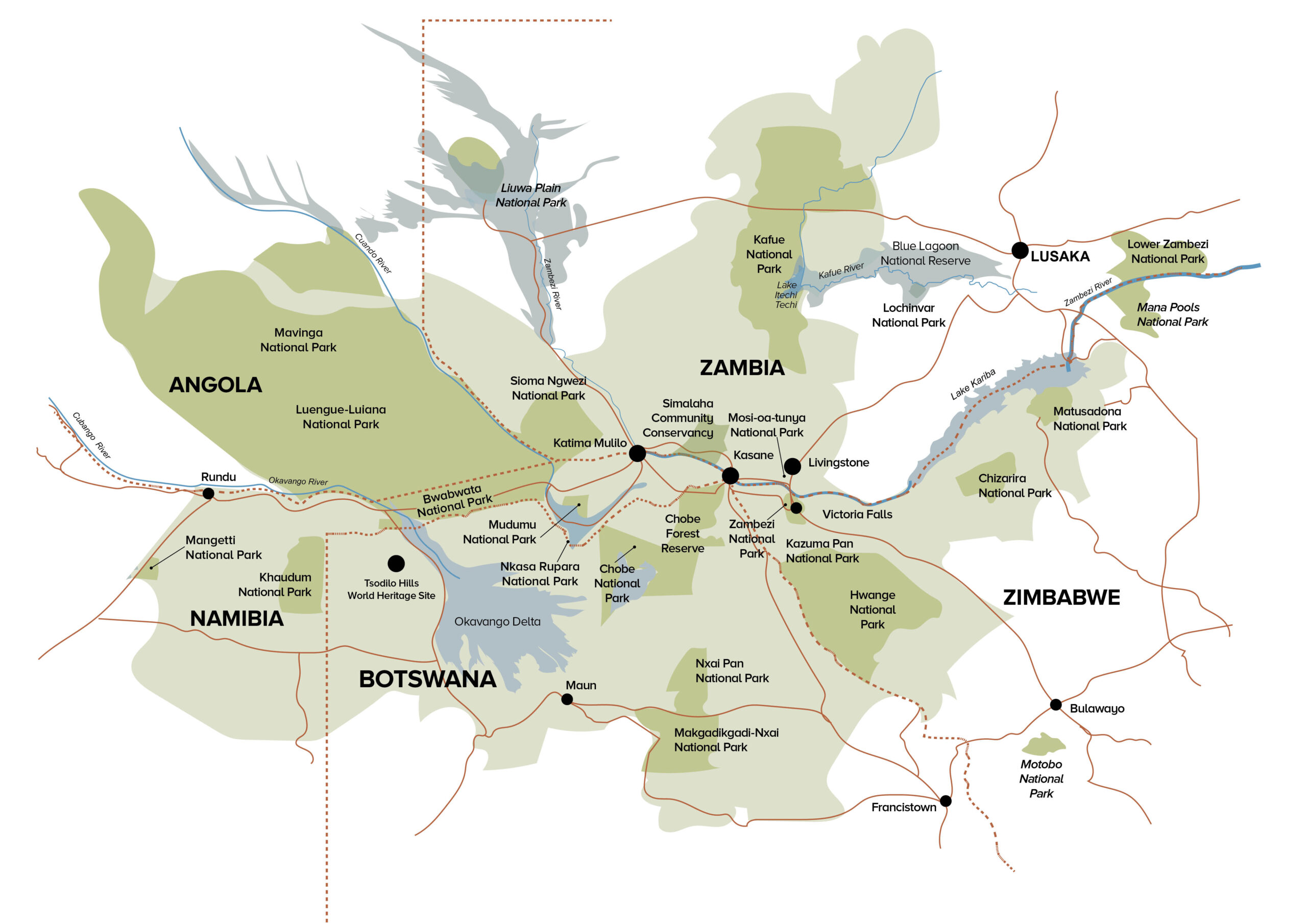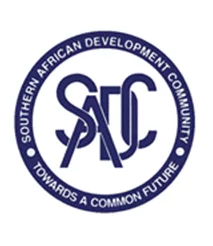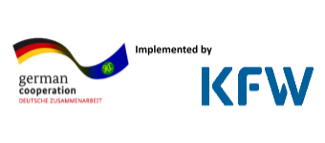Welcome to the Kavango Zambezi Trans Frontier Conservation Area
The Kavango Zambezi Trans Frontier Conservation Area (KAZA TFCA), spanning approximately 520,000 km2, is a groundbreaking partnership of the Governments of Angola, Botswana, Namibia, Zambia, and Zimbabwe. This ambitious conservation, development, and tourism initiative lies within the Okavango and Zambezi river basins. It operates as an official Southern African Development Community (SADC) programme, uniting five nations under a shared vision of regional cooperation in transboundary conservation and sustainable development.
Vision and Mission
OUR VISION
To establish a world-class trans frontier conservation and tourism destination area in the Okavango and Zambezi River Basin regions of Angola, Botswana, Namibia, Zambia and Zimbabwe within the context of sustainable development.
OUR MISSION
To sustainably manage the Kavango Zambezi ecosystems, and its heritage and cultural resources based on best conservation and tourism models for the socio-economic wellbeing of the communities and other stakeholders in and around the KAZA region through harmonisation of policies, strategies, and practices.
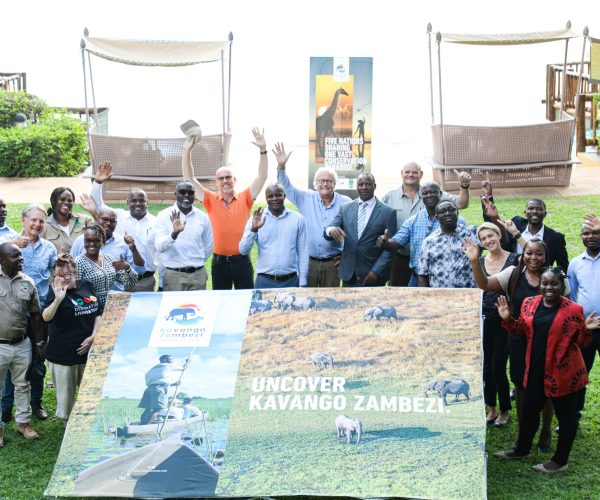
A Coexistence Landscape
KAZA TFCA is a globally significant co-existence landscape with an estimated human population of 3 million that inhabit a mixed land-use landscape of which nearly 371,394 km2 (70% of the area) is under some form of wildlife management, leaving 148,520 km2 for agricultural use, including rangeland. The huge variety of land uses presents a major challenge as adjacent areas often have conflicting and incompatible uses. The identification, prioritisation, and management of the many conflicting land uses to ensure the effective functioning of the Wildlife Dispersal Areas as well the creation of a conducive environment where both nature and people can thrive, and mitigation of human wildlife conflict is part of the high-level aspirations of the five KAZA TFCA Partner States.
Leadership and Organisation
The KAZA TFCA is led by the governments of the five Partner States. The governance structure for the KAZA TFCA has six levels:
- The highest authority is the Ministerial Committee, which provides political leadership and ultimate approval.
- The Coordinating Country rotates every 2 years. It drives the planning processes and, as the representative of the Partner Countries, can expedite decision-making. It is responsible for convening meetings that involve all Partner Countries and is tasked with mobilising resources for the KAZA TFCA.
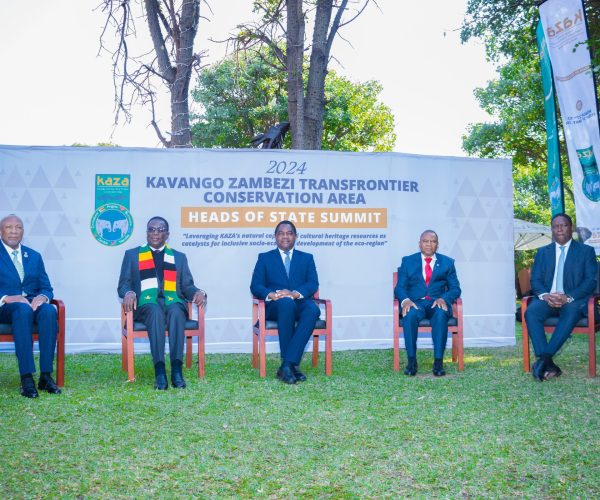
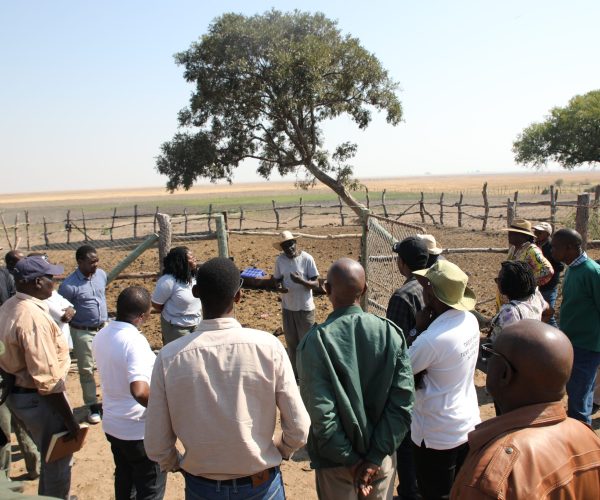
Partners & Stakeholders
The establishment and development of KAZA TFCA have hinged on and benefited from significant support from different Partners, including local communities and international NGOs, as well as international cooperating partners.
Partner States, as articulated in the KAZA TFCA Treaty, recognise the importance of partnerships. The Secretariat leverages different partnerships in pursuit of its shared vision, mission, and objectives. See the story map depicting different projects implemented by our various partners.
